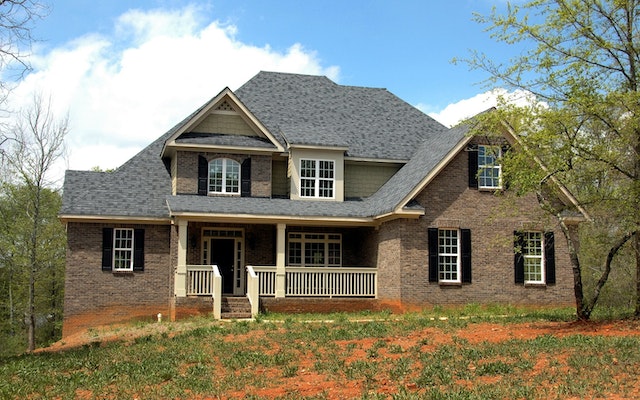How much will my new roof cost
All roofs are different and shapes, sizes, slopes and equipment all play a role in determining a fee.
For shingled, slate, cedar, metal and flat roofs, the number of layers of existing material you currently have is important. This drastically affects the amount of debris that will need to be removed from the site. The roof pitch also dictates the fee. In the roofing world, we refer to these as walkable and non-walkable roofs. If a roof is non-walkable, the project is much more time consuming as ropes and shingles must be handled much differently. If you have mechanical equipment or solar panels on the roof, these will need to be factored in and can greatly affect the amount of time needed for installation. The size of the roof is the greatest single aspect of the fee. In the roofing world, we call these squares. A square is a 100 foor area. Imagine a ten by ten area on your roof and this is a square. Roofing material has different burn rates depending on factors like dormers, skylights and flashing. It is for this reason that a proper estimate should require a technician to actually get on the roof. This will allow for a true understanding of the current conditions. All too often we see other companies claiming a one size fits all roofing fee. Unfortunately, upon installation day the fee may change. Every roof has unique characteristics and proper planning large or small will allow for a successful project and a happy client.
Getting a new roof is one of the largest home improvement projects any homeowner will face. It’s an expensive job, and it’s important to know the typical new roof costs and other related considerations before commissioning a job. To help make sure you’re prepared, here is an overview of the new roof cost.
How to Estimate New Roof Cost
As with all home improvement projects, the cost will depend largely on roof size and complexity, the materials chosen, labor costs in your area, and the contractor you choose.
While a new roof cost can range widely, the typical cost for a new roof is 8-10 times what it costs to get a typical roof repair. That’s an important benchmark to remember when budgeting for a new roof and understanding exactly how expensive a new roof can be.
Get a couple of estimates from local roofers so you can make an informed decision about the materials and the contractor you’ll choose to get the job done, and also get an even better understanding of the total after labor and materials.
Factors That Impact New Roof Cost
When evaluating the cost of a new roof, several factors will go into the final cost: roof size, complexity (e.g., hip roof versus a gabled roof), roof style, the material selected, permits, labor costs, and the contractor used. All of these factors play a role in your final new roof cost.
The roof size is one factor that has the largest effect on the cost of a new roof. The better the quality of the materials and the more complex the roof, the higher the new roof cost. Complex roofs with multi-tier designs also often come with naturally higher prices.
Pros and Cons of Replacing a Roof
There are a few advantages to getting a new roof. A higher-quality roof will provide better protection against the elements using better roofing materials. Furthermore, many roofs come with a manufacturer warranty of up to 30 years.
On the other hand, the principal downside of replacing a roof is the cost. A new roof will be more expensive. Even though there have been fewer repairs over the years – roofing costs don’t get any lower the longer you wait.
Types of Roofs, Materials, and Prices
To understand the costs of a new roof, it’s important to know the most common materials used in roof construction, which include:
Asphalt Shingles: Known for its affordability, it will likely be the cheapest and most common choice. Metal: Usually made from aluminum or copper, but tends to be more expensive than asphalt shingles. Wood Shingles or Shakes: More durable than other materials. They’re also susceptible to fire and rot. Tile Roofing: One of the most durable roofing materials but also the most expensive option.
Benefits of a New Roof
Aside from providing better protection against the elements, a new roof has many other benefits.
One of the biggest benefits of getting a new roof is improved energy efficiency. You can lower cooling costs with better roofing insulation and other energy-saving techniques.
Additionally, a new roof will increase the value of your home. Aesthetic appeal is one of the most important factors when selling a home, so it pays to invest in increasing the value of a home through a new roof.
How to Budget For a New Roof
Budgeting for the project is the most important part when preparing for a new roof. Setting a realistic budget is important to ensure that everything fits into the economic plan. Here are some things to consider when budgeting for a new roof:
- Make sure you get quotes from multiple contractors with different materials and estimates.
- Be ready to pay for permits and other additional costs.
- Get quotes from a variety of roofers and compare pricing for different materials.
- Ensure you know the level of expertise of the installers you’ve contacted.
- Ensure that you account for plans and insurance to cover any losses.
FAQs About New Roof Cost
Q. How much should it cost to install a new roof?
A. It depends on several factors, including size, complexity, materials, labor costs, and the contractor chosen. The average cost of a new roof is 8-10 times that of a typical roof repair.
Q. How can I save money on a new roof?
A. Get multiple quotes from different contractors and compare different materials. Feel free to haggle with contractors who seem to be overpricing. You can save money by doing easy work, such as roof preparation for new shingles.
Q. What materials are the most popular roofing materials?
A. Asphalt shingles are the most popular roofing material, followed by metal, wood, and tile.
Conclusion:
Investing in a new roof for your home can be a great investment in the long run, as a new roof may help protect your home from damage due to weather conditions, provide better insulation during extreme temperatures, and even help to raise the resale value of your home. Ultimately, the cost of a new roof will depend on the materials used, the roof’s size and complexity, and the installation professionals’ expertise. With the right research and planning, you can ensure you are making the best decision for your home and budget.
Complete Roofing Solutions
www.rooffixed.com
completeroofs@gmail.com
3017700552









